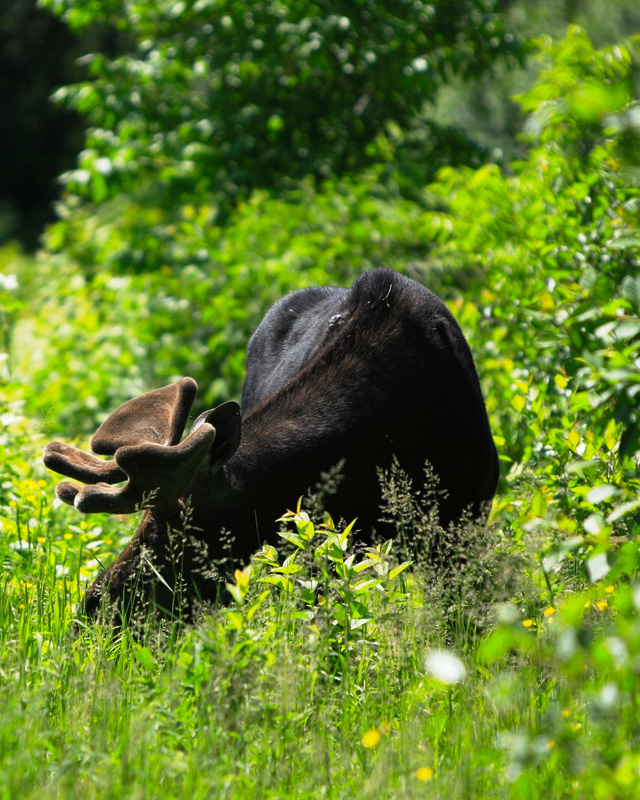
A bull moose grazing. Photo © Ray Dumas, licensed Creative Commons Attribution & ShareAlike.
During the summer, researchers and volunteers head into the wild to study elements of the moose population…The island’s isolation, the limited presence of humans, and limited quantifiable populations have created an ideal place for studying the relationship. Physical barriers prevent the island’s animals from leaving easily, and effectively keep others at bay. So while the populations are by no means stagnant, their ups and downs can be tracked with relative ease and attributed to natural causes such as illness and hard winters. The majority of moose deaths, however, are caused by wolf predation.An ongoing study of the wolf-moose relationship has confirmed that the two large animals are uniquely interdependent. Wolves are the only natural predator for the moose, and moose make up some 90 percent of the wolves’ diets (the rest is beavers and snowshoe hares). The fates of the creatures are thus linked; a spike in one population or a drop in the other provides invaluable information to the researchers from Michigan Technological University who study the animals.
During the summer, researchers and volunteers head into the wild to study elements of the moose population by examining the carcasses, checking the impact of moose ticks, observing the moose as they forage, measuring the amount of available food, and collecting droppings for dietary analysis. The researchers also study the wolves, analyzing their droppings to gather DNA identifications for each of the predators on the island. There’s no guarantee that they’ll find every wolf, but since they tend to collect a large quantity of droppings, the list is fairly exhaustive.
Much of the work takes place in the winter, while the park is closed to visitors. From mid-January through early March, wolf and moose populations are measured through flyover observation. Researchers also estimate kill rates and perform studies on the carcasses.
Since 2010, the team conducting the survey has documented a decline in the impact of parasitic ticks on the moose population. This has led to an increase in the number of moose, which today stands at roughly 1,050. For their part, the wolf population in 2014 totaled about 10, split into two packs, plus one lone wolf wandering the island. Biologists speculate that inbreeding may account for the declining number of wolves. As the study continues, each year brings with it new and sometimes surprising information.
Excerpted from the Third Edition of Moon Michigan’s Upper Peninsula.